CampFireJack
Member
- Joined
- May 9, 2021
- Messages
- 118
- Reaction Score
- 1
- Points
- 16
- #1
Quick note: This wood mount quickly rotted away due to all of the moisture in the basement. I had to rip it all out. I now have the pump mounted on some cement blocks. If I were going to do this project again, I would certainly use pressure treated lumber.
PS - Be sure to share your own photos below. I'd like to see some other basement well pump mounting solutions. Thanks!
------
There are a few things that I really love about this house. Two of them are, 1. We have a shallow well and, 2. The well pump is in the basement.
When we lived in Connecticut, we had a deep well. Who knows how deep it was. I’m sure it was very deep. There were nights I would lay in bed wondering when the pump was going to go. Either the pump or some other catastrophic event having to do with the well. And in that part of town, when something did eventually go wrong with the well, I’m sure it would have cost thousands just to get someone out there to look at it. I’ve pulled up well pumps. Believe me, those people earn their money.
When we arrived at this house, I was delighted to learn that the well was shallow. I believe I was told that it’s about 18 feet deep. There aren’t many houses out here, so shallow wells are common. Usually people lean towards deep wells due to pollution and septic, but there isn’t that issue here.
Upon inspecting the basement, I was even more delighted to learn that I had extraordinarily easy access to the well pump because it was located right there – in the basement. It was sitting on three cement blocks. Sitting there ready for repair or replacement. Oh what a joy.
There was something I wasn’t too fond of though. And I’m not sure why. Perhaps it’s because I’ve decided to skip laying gravel in the first part of the crawl space as a water buffer covered by plastic and decided to go with the hundreds of free pavers we have stored out back, or just because it looks more tidy, but what I didn’t like was how the well pump was mounted. Well, actually, it wasn’t. It was laying on top of those three cement blocks I just told you about. Here they are. I just pulled them out of their resting place.
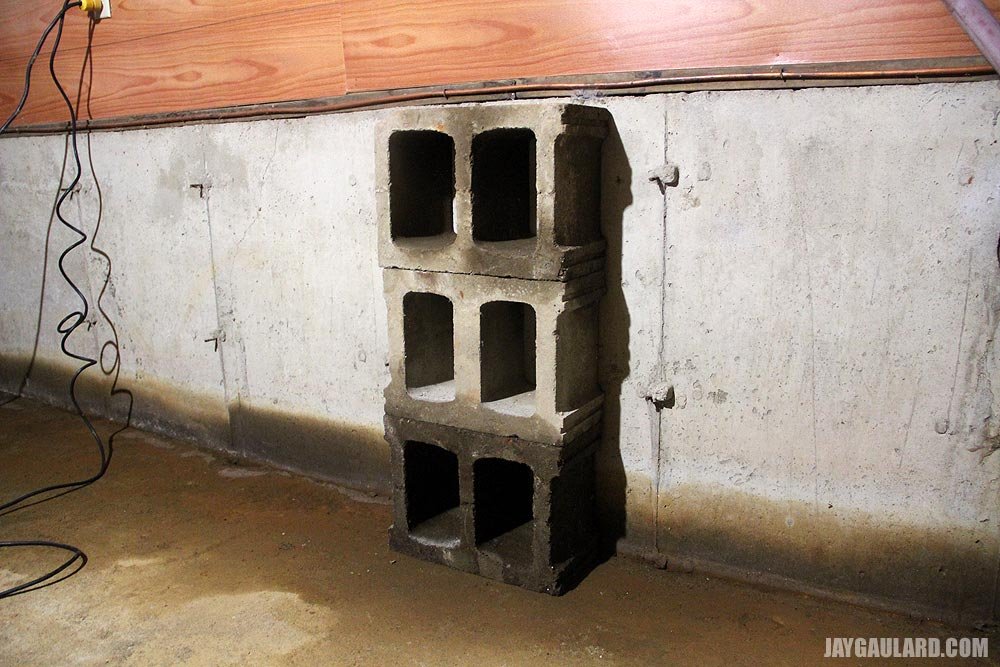
Basically, if I was going to start prepping the basement for gravel and a plastic vapor barrier, I would need to get everything out of the way. And that included elevating the well pump off the ground and getting rid of the cement blocks. I would need to create some sort of a shelf. I began thinking of this last night and throughout the evening, I devised a plan.
I spent about two hours this morning cutting plywood and extra boards I found laying around and put together something mighty fine indeed. While it doesn’t look like it could make it down a modeling runway, it serves its purpose. And it’s strong. I drilled right into the concrete, so I know it’s strong.

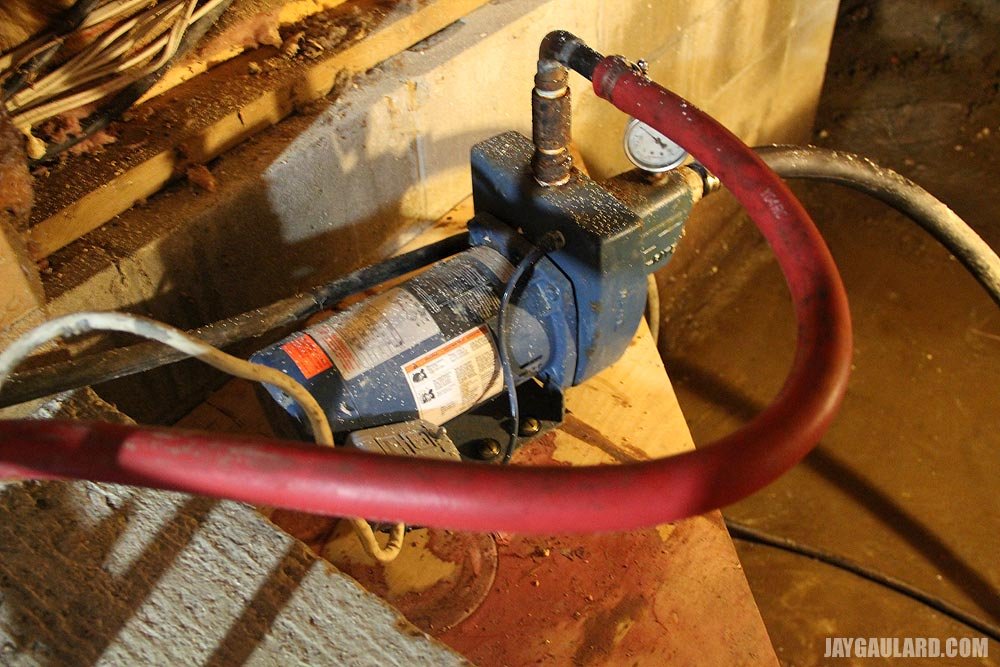
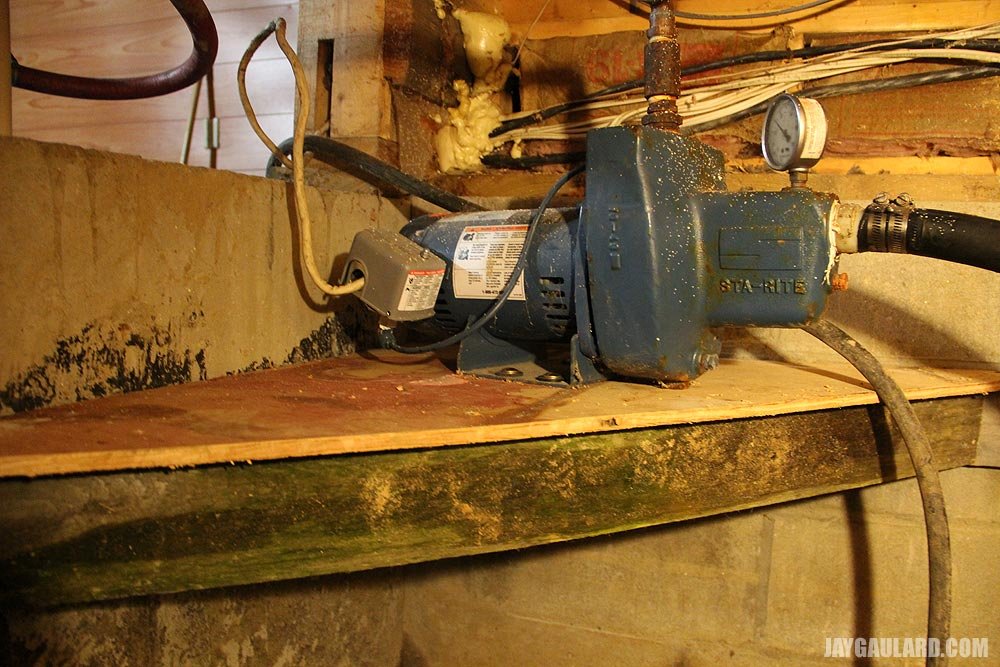
When I was finished putting up the very strong shelf, I thought I’d better mount the pump to the shelf. The way it was, it was flopping all over the place from the rigidity of the attached hoses. They basically controlled which way the pump was going to sit, not the other way around. To solve this small issue, I looked through my bin of odds and ends and found a few old toilet tank mounting bolts. I drilled some holes and used the bolts to hold down the pump.
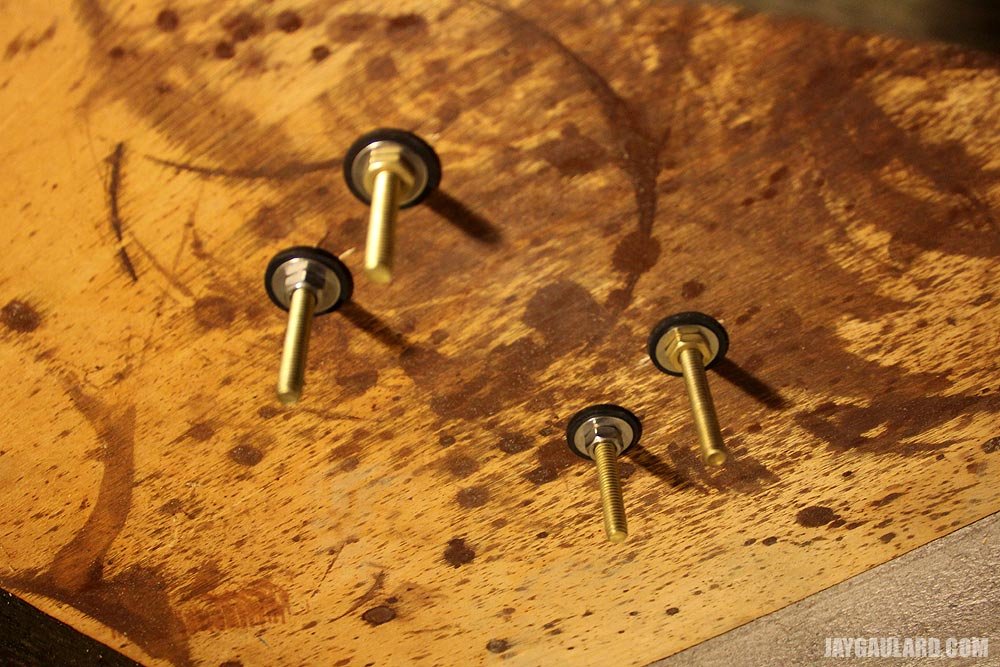
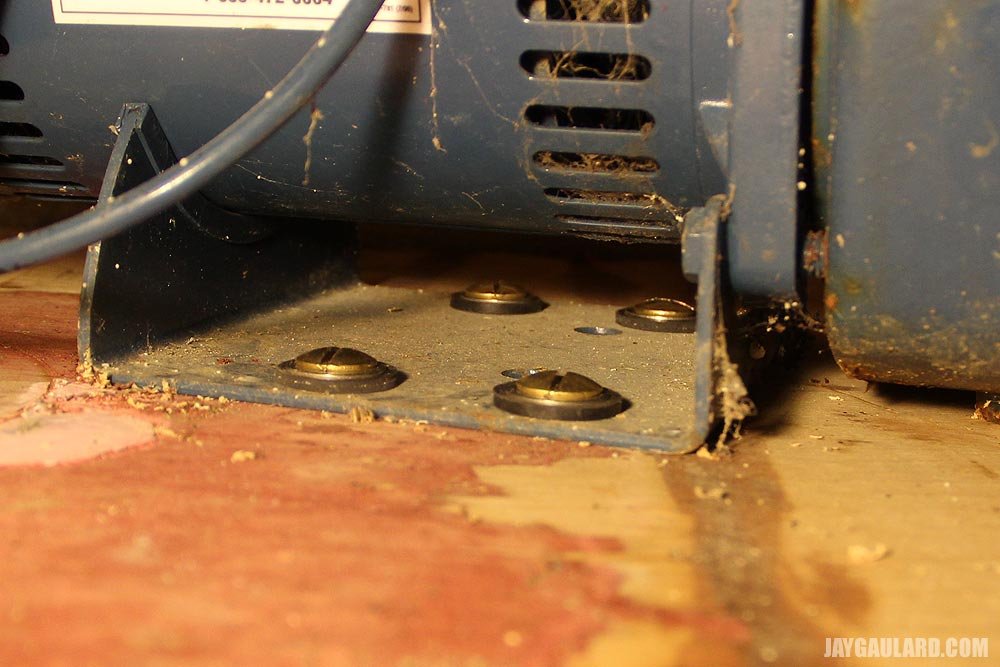
What do you think? Is this not the best mounted well pump in the basement ever?
PS - Be sure to share your own photos below. I'd like to see some other basement well pump mounting solutions. Thanks!
------
There are a few things that I really love about this house. Two of them are, 1. We have a shallow well and, 2. The well pump is in the basement.
When we lived in Connecticut, we had a deep well. Who knows how deep it was. I’m sure it was very deep. There were nights I would lay in bed wondering when the pump was going to go. Either the pump or some other catastrophic event having to do with the well. And in that part of town, when something did eventually go wrong with the well, I’m sure it would have cost thousands just to get someone out there to look at it. I’ve pulled up well pumps. Believe me, those people earn their money.
When we arrived at this house, I was delighted to learn that the well was shallow. I believe I was told that it’s about 18 feet deep. There aren’t many houses out here, so shallow wells are common. Usually people lean towards deep wells due to pollution and septic, but there isn’t that issue here.
Upon inspecting the basement, I was even more delighted to learn that I had extraordinarily easy access to the well pump because it was located right there – in the basement. It was sitting on three cement blocks. Sitting there ready for repair or replacement. Oh what a joy.
There was something I wasn’t too fond of though. And I’m not sure why. Perhaps it’s because I’ve decided to skip laying gravel in the first part of the crawl space as a water buffer covered by plastic and decided to go with the hundreds of free pavers we have stored out back, or just because it looks more tidy, but what I didn’t like was how the well pump was mounted. Well, actually, it wasn’t. It was laying on top of those three cement blocks I just told you about. Here they are. I just pulled them out of their resting place.

Basically, if I was going to start prepping the basement for gravel and a plastic vapor barrier, I would need to get everything out of the way. And that included elevating the well pump off the ground and getting rid of the cement blocks. I would need to create some sort of a shelf. I began thinking of this last night and throughout the evening, I devised a plan.
I spent about two hours this morning cutting plywood and extra boards I found laying around and put together something mighty fine indeed. While it doesn’t look like it could make it down a modeling runway, it serves its purpose. And it’s strong. I drilled right into the concrete, so I know it’s strong.



When I was finished putting up the very strong shelf, I thought I’d better mount the pump to the shelf. The way it was, it was flopping all over the place from the rigidity of the attached hoses. They basically controlled which way the pump was going to sit, not the other way around. To solve this small issue, I looked through my bin of odds and ends and found a few old toilet tank mounting bolts. I drilled some holes and used the bolts to hold down the pump.


What do you think? Is this not the best mounted well pump in the basement ever?
